PESTS AND DISEASES OF FORESTRY IN NEW ZEALAND
Physiological needle blight
From Field Assessment, Control and Identification of Common Foliage Diseases of Pine in New Zealand.
Primary diagnostic features of Physiological Needle Blight (PNB)
- Needles have distinct olive or olive with black resinous bands in initial stage
- Symptoms develop on foliage that flushed in the previous year
- Needles turn red-brown
- Needles droop and wilt, and are not easily removed from branch
- The entire tree crown may be affected
- Symptoms may start any time between May and November, but disease peaks about October-November later than RNC
- On affected branches nearly all the foliage shows symptoms
- The needles remain on the tree for at least one year, by which time they have turned grey
- Generally trees older than 14 years are affected
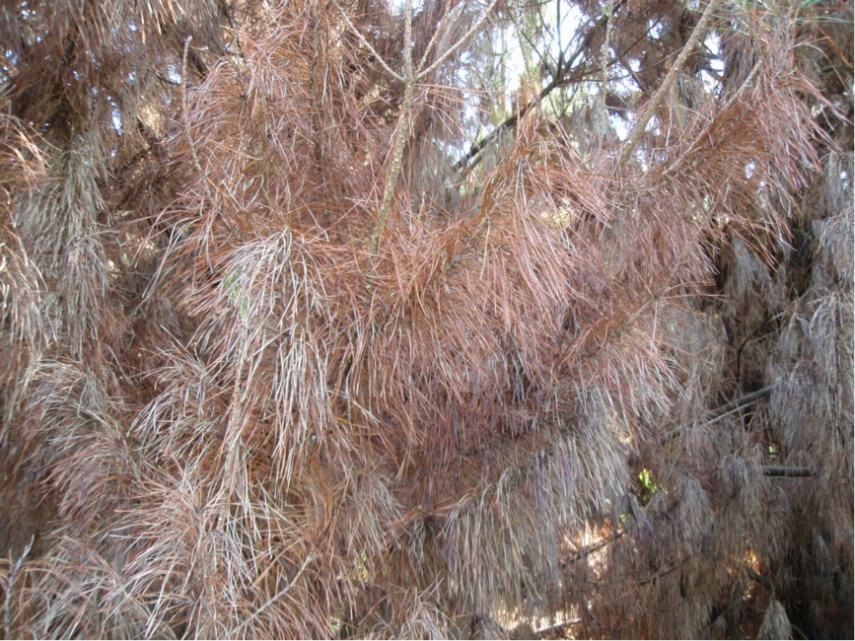
PNB with advanced stage grey foliage in the foreground and red less advanced stage foliage in the upper part of the photo.
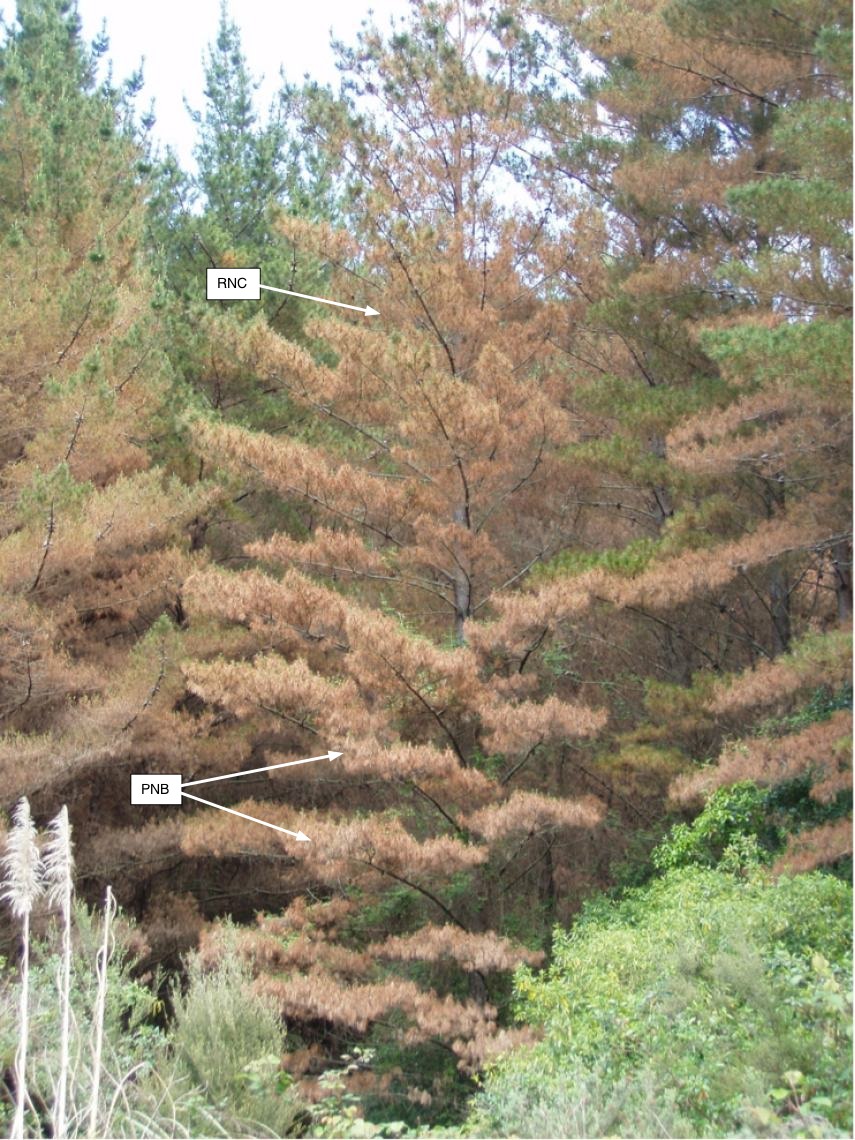
The middle tree displays both RNC and PBN symptoms. The upper crown has RNC (more yellow in colour, foliage not wilting) while the lower crown has the wilting foliage typical of PNB (more red-brown in colour, needles wilting and drooping). This is uncommon but presented here to show the differences between RNC and PNB.
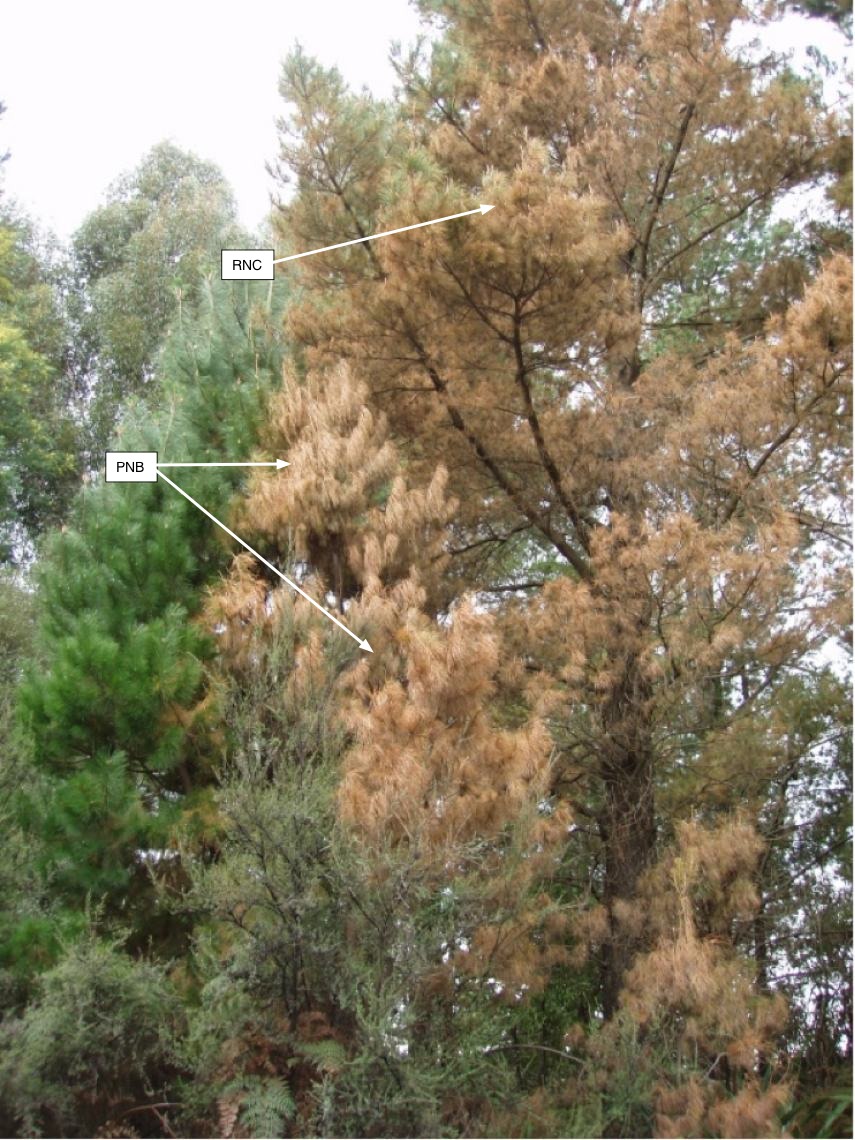
PNB on tree in foreground clearly showing wilted foliage in front of a larger tree affected by RNC. As above, presented here to show the differences between RNC and PNB.
Individual branch view - PNB
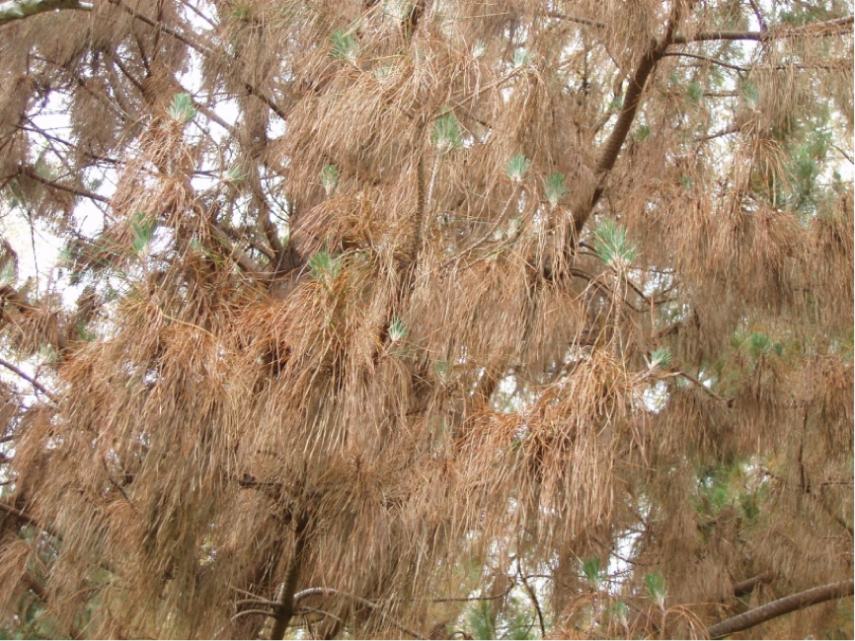
Branch in mid October (drooping red-brown needles, limited new flush)
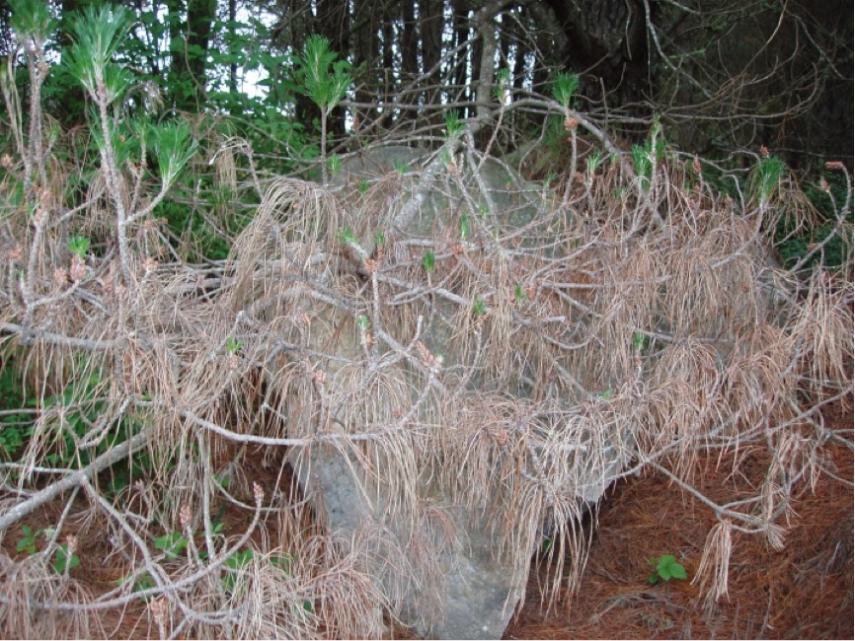
Branch showing severe PNB from previous season. Note affected foliage remaining on the branch.
Disease locations
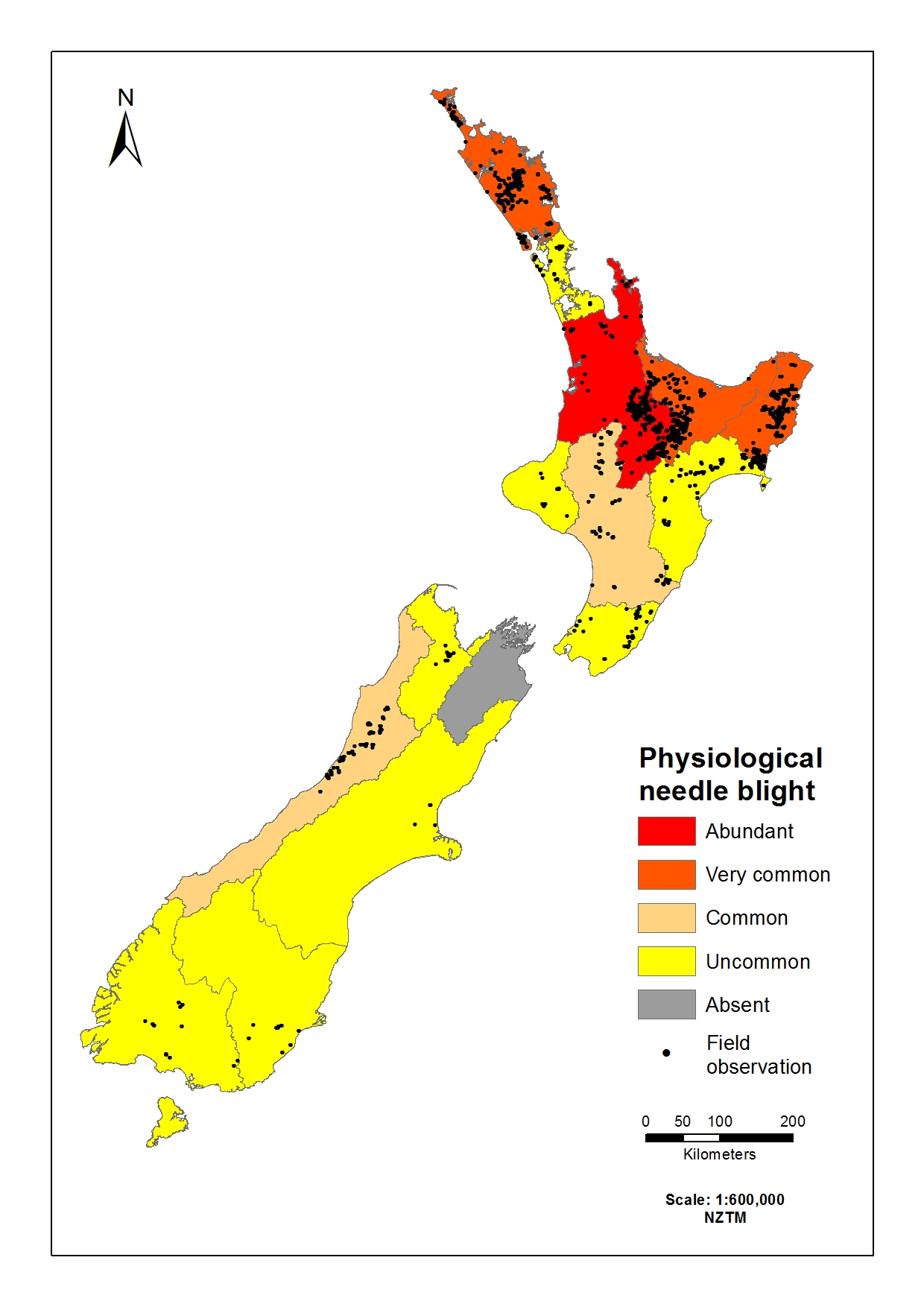

 Farm Forestry New Zealand
Farm Forestry New Zealand

